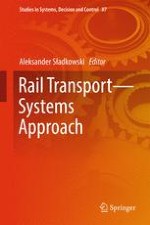2017 | OriginalPaper | Chapter
Systems Approach to the Analysis of Electromechanical Processes in the Asynchronous Traction Drive of an Electric Locomotive
Authors : Pavel Kolpakhchyan, Alexander Zarifian, Alexander Andruschenko
Published in: Rail Transport—Systems Approach
Publisher: Springer International Publishing
Activate our intelligent search to find suitable subject content or patents.
Select sections of text to find matching patents with Artificial Intelligence. powered by
Select sections of text to find additional relevant content using AI-assisted search. powered by
